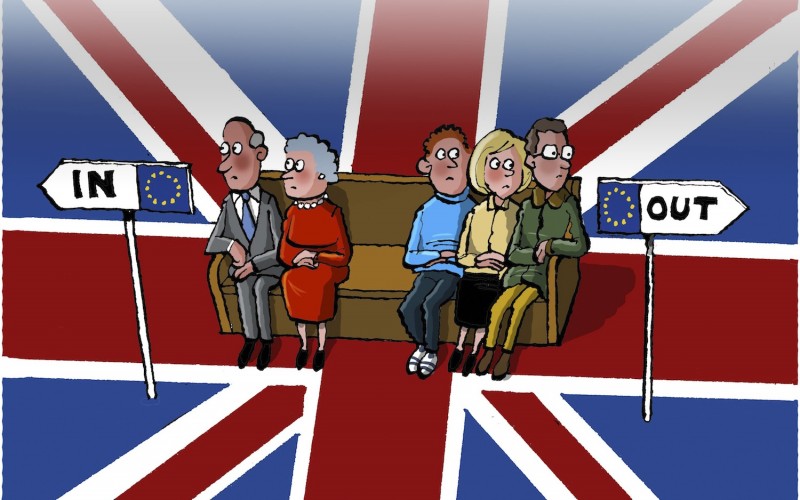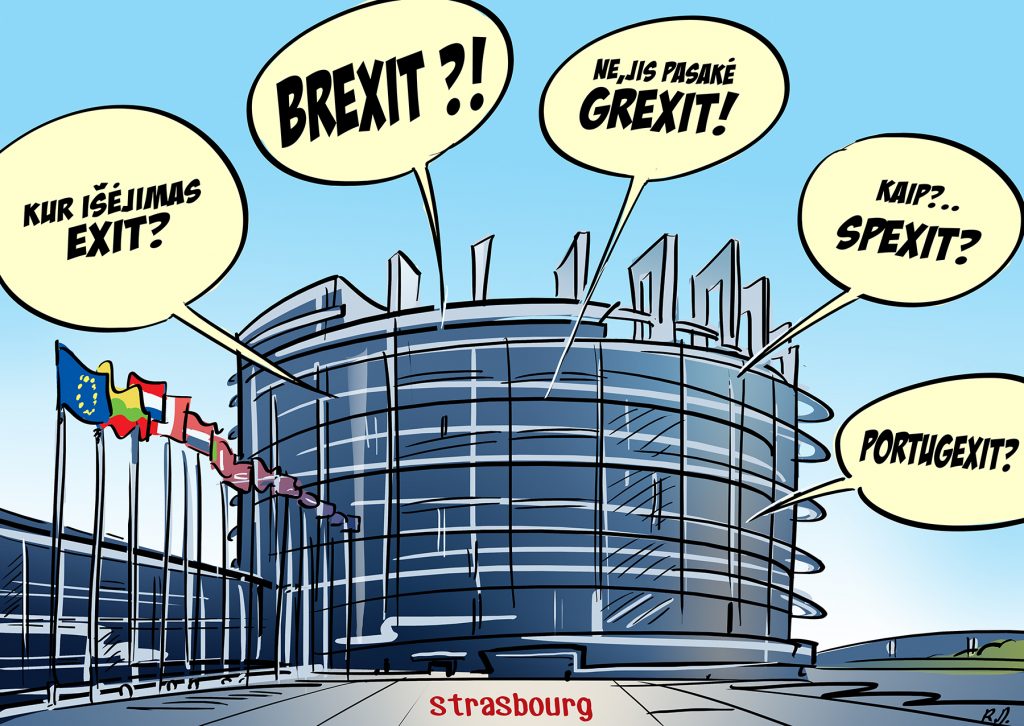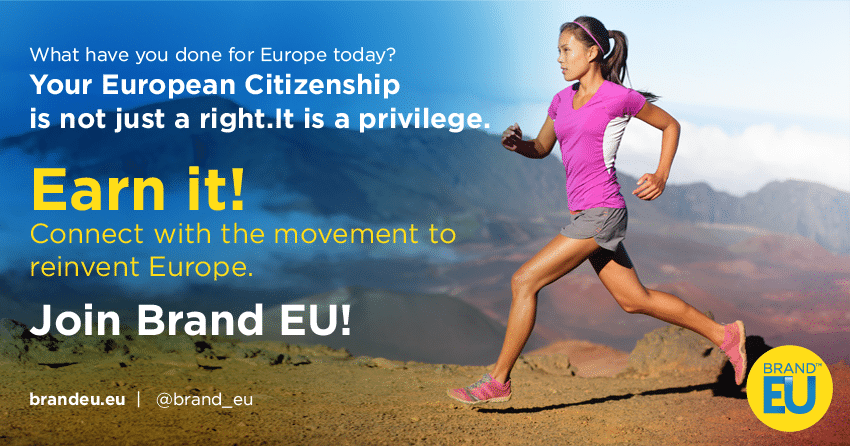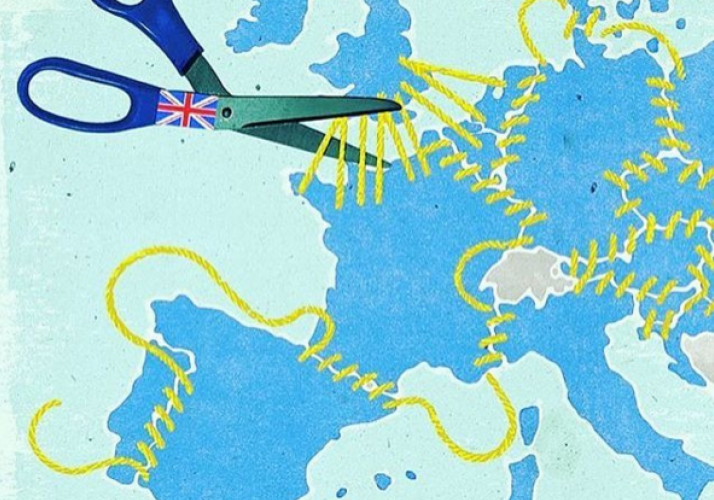The most talked about and controversial topic, marking a historic event not only for the UK but for Europe and the rest of the world. As everyone starts to unravel the consequences of what leaving means for the UK and the EU, we look from a marketing perspective at the EU brand.
What does Brexit mean for the remaining member nations? Was the EU brand strong enough in the first place in communicating its benefits? And even more so now, is it strong enough to continue?
1) Brexit: Britain to leave the EU
A country run currently by a Conservative government, made the decision to hold a referendum on whether Britain should remain in the European Union or not – simple?! However, such a large and complex decision was immediately placed into the hands of the media, politicians battling for both sides and the general public trying to ascertain between truth and fiction.
So, on the 23rd June, 2016, with 52% of the public voting to leave the EU, Britain has now become the first country to look to evoke Article 50 which was put in place for when a member nation made the decision to leave the European Union.
What has followed was an immediate resignation from current Prime Minister David Cameron and other MP’s calling for further resignations from within the cabinet. Coupled with an immediate decline in the pound and Japan and China voicing their investment fears in the UK. This exit was by no means an easy one and the consequences will be felt by all.
The general public admit to being in a state of confusion when it came to “Brexit”. Trying to find a single source of information which they could rely on, a website with key facts, statistics and the truth.
For many the “remain” and “leave” campaigns ran like a branding exercise – who was better at getting their message out and how easy was it to read between those false brand promises and the reality.

The remain marketing campaign:
From a branding perspective the marketing campaign for “remain” failed to listen to their target audience. They had a multitude of positive reasons to promote the “stay” but their communication strategy lacked the connection with their audience.
All UK leaders from the Bank of England to the Church of England agreed that the outcome ought to be remain. But maybe because of this assumption that remain was going to win, their communications strategy lacked focus and in some respect a clear targeted approach to getting their message across.
The leave marketing campaign:
But this does not mean to say that the leave campaign was any better! Random marketing messages with no evidence to support, stray comments made to persuade people to vote for them rather than it being strategic and targeted. Just because the billboards and marketing messages resonated with more people does not mean it was clearly thought out, planned or indeed wholly the truth.
However, it’s interesting to note that the brand name “Brexit” (for all not the most original of combining two words together) does stand the leave campaign in a strong position, as the same strategy was applied when Greece was in a state of economic crisis and raised a fear of a “Grexit”.
In the end, the communication from the “leave” campaign certainly resonated with the population. The tactics used were more appealing in winning voters over – and according to The Guardian “the Brexit campaign prevailed because it focused on an upbeat, optimistic bid for change”.
2) How does this affect the EU Brand?
Definition of the European Union:
The European Union is an economic and political union of 28 countries. Each country is independent but agrees to trade under the agreements made by the nations. It operates a single market, which allows free movement of goods, capital, services and people between member states.
The EU brand values and purpose
The EU was created to guarantee peace between countries. Its motto is simple “united in diversity”. And their brand position is to signify how Europeans have come together to work for peace and prosperity, while at the same time being enriched by the continent’s many different cultures, traditions and languages.
The EU’s fundamental values are respect for human dignity and human rights, freedom, democracy, equality and the rule of law. Only those countries who were united by these same values could belong to the union.
Poor branding and communication strategy
According to the International Monetary Fund the economy of the EU generates around €14.303 trillion and it has been argued that if the world treated it as the economy of a single country it would be the largest in the world. This is a high value brand when looked at from this perspective. Yet how much was spent on “the brand”, how much did this economy spend on their communications?
For any organisation building its brand, what it stands for is of the utmost importance. Just because we’re talking in this case about nations uniting, doesn’t make it any different.
To show a united approach the EU created an anthem. According to the EU website, the anthem “symbolises not only the European Union but also Europe in a wider sense” – it is based on the idealistic vision of the human race becoming brothers. Additionally, the EU communicates mainly through its official website (www.europa.eu) and some social media channels. Besides this, little has been done to communicate the values, activities and goals of the EU to its citizens and the rest of the world.
The values of the EU brand is what makes it strong, however the current and past communication strategies have failed in communicating them. There is no clear communication with regards to a single strapline, or coherent message. Member nations do not also show their support by communicating similar marketing messages about why their country is a member very coherently.
Finally, although the EU is doing great things, it is only the negative things that make the headlines. The perception of the EU institutions is that they are distant, confusing and complex. This puts the entire project into doubt and generates divisions between countries, and instability for the future. There is also a lot of media speculation about the current EU President being “out of touch” with modern day society. So is now the right time to maybe appoint someone who is thought to be a little more approachable, cool and a bit more in touch with today’s world?
The EU weakened by the Brexit
The exit of Britain is a major blow to the European Union, both financially and reputation wise. With the departure of Britain now from the EU as well as crisis talks about what happens next, we’re also starting to see people questioning the actual value of the EU as a whole.
In what the media are citing as “Euroscepticism” a lot of work now has to be done, in my opinion, to keep the EU a strong brand and for the remaining countries to again unite.
For example could “Grexit” come back to the forefront in light of the Euro crisis, could Italy and Spain see public opinion change especially ahead of Spain’s upcoming elections? And above all, how will EU chiefs in Brussels keep the bloc together after being forced into damage control by the Brexit?

This has all been able to happen through poor communication strategies. The EU hasn’t clearly communicated the benefits of the union, it has struggled to communicate the benefits of the “brand” to the people.
Today, the EU is going through a deep identity, economic and social crisis at a national and international level. Brexit didn’t help.
5) What to do next: time to re-establish the EU brand
With what is being termed “the divorce proceedings” begin to get underway between Britain and Europe, it is also an opportunity (albeit late) for the EU to re-establish the brand.
The remaining member nations now need to work together to protect and build the reputation of the EU to restore faith and remind their target audiences of the reasons why they are united. The brand is already strong. What it needs is to communicate its values, projects and achievements through a solid long-term communication strategy.
This strategy could start by:
- Monitoring perceptions of the EU brand locally and internationally
- Analysing these perceptions and establishing a solid strategy to change the negative ones.
- Taking actions to change the negative image of the EU brand on key issues
- Creating clear, simple, and fun communications about the EU that will be live in every country member of the EU. This should start big, first with TV, OOH and print ads, followed by an online campaign.
- Being more approachable through a strong social media presence
- Following the initiative of some independent citizens trying to re-build the EU brand. Read our interview with Nicolas De Santis, founder of Brand EU to know more. You can also follow their project here: https://www.brandeu.eu

But above all, working together is key, I mean that is the whole point in the EU anyway, isn’t it?
References: Telegraph, LinkedIn, LinkedIn, The Guardian
Pictures from: Europa.eu, NouvelObs.com, Corbettreport.com, Brandeu.eu







![[object Object]](https://cdn.thebrandingjournal.com/wp-content/uploads/2024/06/Brand-Europe-Branding-768x480.jpg)
Very interesting angle on the whole Brexit dilemma! The European Union has to indeed build its brand and better communicate the benefits of what it means to be European. Great article.
EU referendum has shown how bad the EU brand is managed. BRAND EU project and movement seems like a great initiative to connect with real people and give meaning to the concept of European citizenship.